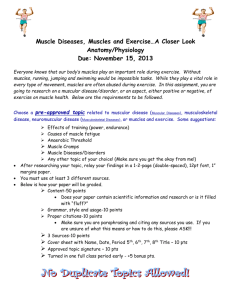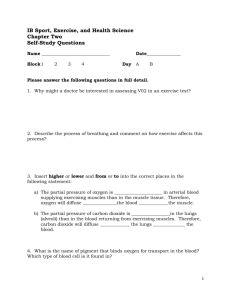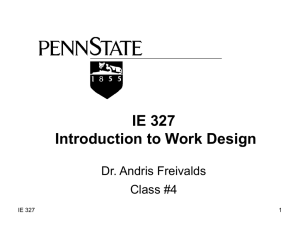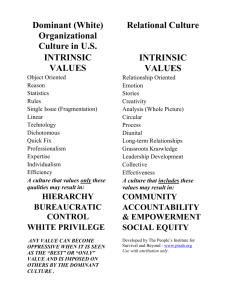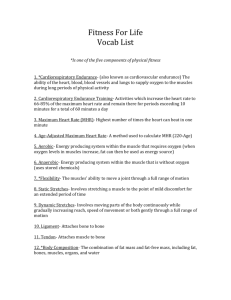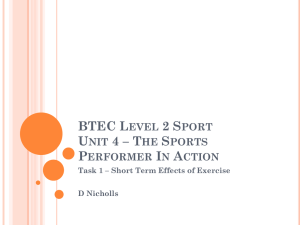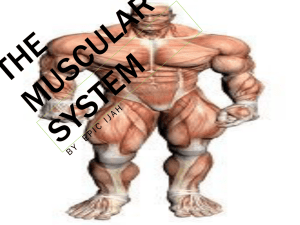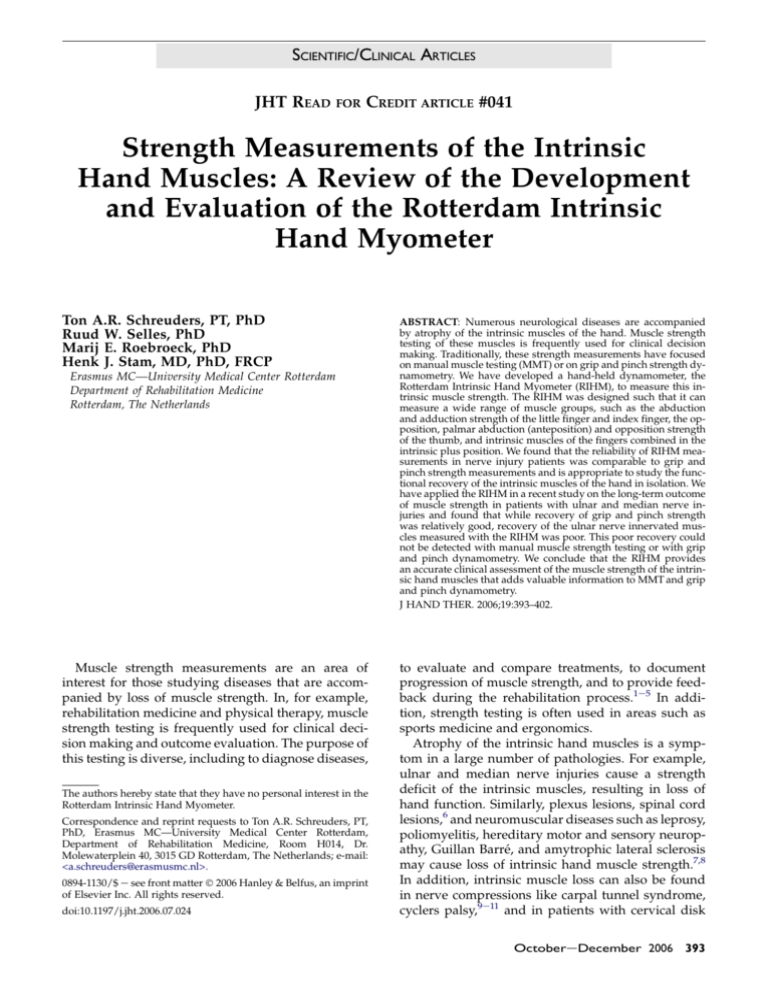
SCIENTIFIC/CLINICAL ARTICLES
JHT READ
FOR
CREDIT ARTICLE #041
Strength Measurements of the Intrinsic
Hand Muscles: A Review of the Development
and Evaluation of the Rotterdam Intrinsic
Hand Myometer
Ton A.R. Schreuders, PT, PhD
Ruud W. Selles, PhD
Marij E. Roebroeck, PhD
Henk J. Stam, MD, PhD, FRCP
Erasmus MC—University Medical Center Rotterdam
Department of Rehabilitation Medicine
Rotterdam, The Netherlands
Muscle strength measurements are an area of
interest for those studying diseases that are accompanied by loss of muscle strength. In, for example,
rehabilitation medicine and physical therapy, muscle
strength testing is frequently used for clinical decision making and outcome evaluation. The purpose of
this testing is diverse, including to diagnose diseases,
The authors hereby state that they have no personal interest in the
Rotterdam Intrinsic Hand Myometer.
Correspondence and reprint requests to Ton A.R. Schreuders, PT,
PhD, Erasmus MC—University Medical Center Rotterdam,
Department of Rehabilitation Medicine, Room H014, Dr.
Molewaterplein 40, 3015 GD Rotterdam, The Netherlands; e-mail:
<a.schreuders@erasmusmc.nl>.
0894-1130/$ e see front matter Ó 2006 Hanley & Belfus, an imprint
of Elsevier Inc. All rights reserved.
doi:10.1197/j.jht.2006.07.024
ABSTRACT: Numerous neurological diseases are accompanied
by atrophy of the intrinsic muscles of the hand. Muscle strength
testing of these muscles is frequently used for clinical decision
making. Traditionally, these strength measurements have focused
on manual muscle testing (MMT) or on grip and pinch strength dynamometry. We have developed a hand-held dynamometer, the
Rotterdam Intrinsic Hand Myometer (RIHM), to measure this intrinsic muscle strength. The RIHM was designed such that it can
measure a wide range of muscle groups, such as the abduction
and adduction strength of the little finger and index finger, the opposition, palmar abduction (anteposition) and opposition strength
of the thumb, and intrinsic muscles of the fingers combined in the
intrinsic plus position. We found that the reliability of RIHM measurements in nerve injury patients was comparable to grip and
pinch strength measurements and is appropriate to study the functional recovery of the intrinsic muscles of the hand in isolation. We
have applied the RIHM in a recent study on the long-term outcome
of muscle strength in patients with ulnar and median nerve injuries and found that while recovery of grip and pinch strength
was relatively good, recovery of the ulnar nerve innervated muscles measured with the RIHM was poor. This poor recovery could
not be detected with manual muscle strength testing or with grip
and pinch dynamometry. We conclude that the RIHM provides
an accurate clinical assessment of the muscle strength of the intrinsic hand muscles that adds valuable information to MMT and grip
and pinch dynamometry.
J HAND THER. 2006;19:393–402.
to evaluate and compare treatments, to document
progression of muscle strength, and to provide feedback during the rehabilitation process.1e5 In addition, strength testing is often used in areas such as
sports medicine and ergonomics.
Atrophy of the intrinsic hand muscles is a symptom in a large number of pathologies. For example,
ulnar and median nerve injuries cause a strength
deficit of the intrinsic muscles, resulting in loss of
hand function. Similarly, plexus lesions, spinal cord
lesions,6 and neuromuscular diseases such as leprosy,
poliomyelitis, hereditary motor and sensory neuropathy, Guillan Barré, and amytrophic lateral sclerosis
may cause loss of intrinsic hand muscle strength.7,8
In addition, intrinsic muscle loss can also be found
in nerve compressions like carpal tunnel syndrome,
cyclers palsy,9e11 and in patients with cervical disk
OctobereDecember 2006 393
herniation. Finally, hand-arm vibration syndrome12e15 and diabetes might result in atrophy of the
intrinsic muscles of the hand.16 Strength measurements of the hand have generally focused on grip
and pinch strength.17e19 However, these grip and
pinch strength measurements have the disadvantage
of evaluating both the intrinsic and extrinsic hand
muscles in combined action. In patients in whom
the extrinsic muscles are not affected to the same extent as the intrinsic muscles, grip and pinch strength
measurements may not be sensitive enough to detect
deficits in intrinsic muscle strength due to the significant contribution of the extrinsic muscles to the total
pinch and grip strength measurement.20
Over the last few years, we have developed and
tested the Rotterdam Intrinsic Hand Myometer
(RIHM*) to measure the strength of the intrinsic
hand muscles. This article briefly reviews the traditional tools used to measure intrinsic hand muscle
strength and introduces the RIHM. We review
data on the repeatability of RIHM measurements
of the intrinsic hand muscles and present patient
data that indicate how specific measurement of
the intrinsic hand muscles using an instrument
like the RIHM adds to the understanding of intrinsic muscle loss.
MANUAL MUSCLE TESTING OF THE
INTRINSIC HAND MUSCLES
In clinical practice, the intrinsic hand muscles are
most often evaluated using manual muscle testing
(MMT),21 which was first developed by Lowman in
1911, followed by Lovett22 who introduced the testing grades based on gravity. In MMT, muscle contraction is graded on a scale from 0 to 5, which is known
as the Medical Research Council (MRC) Scale or the
Oxford Grading Scale.23 At present, the MRC scale
is most often used for MMT.24 Within this grading
scale, complete paralysis is graded as 0, grade 3 is
when the limb segment can be moved actively
against gravity, and grade 5 is normal strength. For
evaluating the intrinsic hand muscle strength, a small
modification to the standard MRC grading was suggested so that grade 3 indicates ‘‘full active range of
motion’’ as compared to ‘‘movement against
gravity.’’4
In the hand, the MRC scale has often been successfully used to assess the intrinsic hand muscles.21,25
The hand of the examiner feels the muscle activity
and gives resistance when grading the muscle (see
Figure 1). It should be noted that, although textbooks
usually present the tests as if it evaluates muscles in
isolation, usually a group of muscles is tested rather
*Information about the Rotterdam Intrinsic Hand Myometer
(RIHM) can be found at www.erasmusmc.nl/rehabilitation.
394
JOURNAL OF HAND THERAPY
FIGURE 1. Illustration of manual muscle strength testing
of the abduction strength of the little finger; the right hand
of the examiner gives resistance to determine which grade
the muscle can be given.
than just one muscle. Therefore, some authors3,4
have suggested labeling the movement rather than
the muscle. For example, the MMT should be interpreted as grading the palmar abduction movement
of the thumb, sometimes called the anteposition of
the thumb, instead of abductor pollicis brevis, since
the abductor pollicis brevis is not the only muscle active during palmar abduction of the thumb.
Although indispensable in clinical practice, the
MMT method has a number of limitations. One
limitation is that while the MRC uses a 6-point
numeric scale and seems to indicate a constant
distance between grades, the MRC scale is in fact
an ordinal scale with disproportional distances between grades; e.g., grade 4 is not twice as strong as
grade 2. It might therefore be more appropriate to use
terms such as normal, good, fair, trace, and paralyzed
as compared to a grading of 0e5. The problem with
using the ordinal MRC scale for muscle strength was
illustrated by van der Ploeg et al.26 who studied manual strength testing and dynamometry measurements of elbow flexion and found that the higher
part of the scale (grades 4 and 5) occupies by far the
largest part of total range (see Figure 2). As a result,
in these ranges the MRC scale will not be able to detect clinically relevant changes in muscle strength.
FIGURE 2. Graph published by van der Ploeg et al.,26 indicating how the amount of force in the elbow measured
with a dynamometer corresponds to the Medical Research
Council grades 0e5. (Reprinted with kind permission
from Springer Science and Business Media.)
Another limitation of the MRC scale is that the scoring depends on the examiner’s ability to assess the
pressure as a parameter for strength and therefore depends on the experience of the examiner. With the 6point ordinal MRC scale it is difficult to identify relatively small but clinically relevant changes in muscle
strength.27 Based on these problems with the MRC
scale, the American Society of Hand Therapists stated
that while the MRC is appropriate to use in cases of
extreme muscle deterioration (grades 0e3), it is not
appropriate for higher-level muscle function due to
a lack of sensitivity and precision.28 Similarly,
Dvir29 demonstrated that even low levels of innervation can produce a grade 4 contraction and concluded
that once reinnervation permits a grade 3 contraction,
quantitative dynamometer measurement of muscle
strength is required to effectively monitor further
improvement.30
DYNAMOMETRY OF THE INTRINSIC
HAND MUSCLES
As an addition to the MRC, a large variety of
dynamometers have been developed to assess muscle strength. In contrast to the MRC scale, dynamometer measurements are more sensitive to change and
render outcome on a continuous scale. An additional
advantage of such measurements is that the strength
of the contralateral hand can serve as the reference
value for that person.
In clinical evaluation and research studies on
patients with hand problems, muscle strength measurements are usually based on grip and pinch
strength dynamometry.17,18,31 As mentioned above,
grip and pinch strength may not be able to detect
changes in the intrinsic hand muscles due to the dominant contribution of the extrinsic hand muscles to
these measurements.
In a recent article concerning measurement of
health outcome in patients following tendon and
nerve repair, MacDermid32 acknowledged that relatively few studies include quantitative information
on intrinsic muscle strength when reporting clinical
outcomes and that few instruments are readily available to perform these measurements.
A number of studies have focused specifically on
the dynamometer measurements of the intrinsic
muscle strength. In 1966, Mannerfelt was one of the
first to develop a dynamometer for measurement of
the intrinsic muscle strength. In 1997, he used a
newer device called the Intrins-o-meter33,34 to study
patients with ulnar nerve compression. He was able
to measure pinch, grip, palmar adduction of the
thumb, radial abduction of the index finger, and ulnar abduction of the little finger, before and after operation. The same instrument was also used by
Necking et al.13e15 in patients suffering from
handearm vibration syndrome to measure the isometric strength of thumb palmar abduction, index
finger abduction, and little finger abduction using
specially designed jigs secured on a table. Trumble
et al.27 performed quantitative measurements of the
intrinsic muscles using a hand-held device and
showed that patients suffering from peripheral nerve
injuries recovered to a median motor grade of 3, corresponding to a 32% recovery compared to the contralateral side. They concluded that dynamometer
testing of muscle strength after peripheral nerve
injuries enhances the sensitivity of evaluating nerve
regeneration and facilitates the comparison of different nerve repair techniques.27 To measure the abduction strength of the thumb in healthy subjects,
Boatright et al.35 used a strain gauge system and
found that thumb abduction strength generally correlated with grip and pinch strength. After median
nerve block, the thumb abduction strength decreased
by 70e75%. Liu et al.36 used a portable microprocessor-controlled hand-held device to obtain normative values for abductor pollicis brevis strength in
297 volunteers. No significant differences were found
between the different age groups that were studied
and between the dominant and nondominant hand.
Recently, Jacquemin et al.6 developed a device to
measure the strength of the intrinsic muscles of the
hand in patients with spinal cord injury (SCI). It
was reported that abnormalities of the peripheral
nervous system, such as peripheral nerve entrapments, often affect hand intrinsic muscle strength of
SCI patients.
The above-mentioned studies indicate that measurement of the intrinsic muscle strength can provide
useful information for clinical evaluation and research studies that can not be obtained using grip
and pinch measurements. We decided that there is a
need for an instrument to measure the intrinsic
muscle strength that is hand held, portable, easy to
use, that provides appropriate visual feedback about
the direction of force, and that is able to measure the
strength of all intrinsic hand muscles with a single
device (see also32).
DESIGN OF RIHM
The RIHM was developed as a hand-held, ergonomically designed dynamometer and is made of a
strong lightweight plastic, which contains the battery,
the force sensor, and electronics (see Figure 3). The
peak forces can be read from a digital display on
top of the device. The grip is positioned at a 978 angle
with the horizontal, allowing the tester to hold the
wrist in a comfortable and stable position.
The device can store a maximum of 99 measurements, which can be downloaded to a PC using an
USB cable for off-line analysis. The data can also be
OctobereDecember 2006 395
FIGURE 3. Illustration of five measurements with the Rotterdam Intrinsic Hand Myometer, that is (A) abduction of the
little finger; (B) abduction of the index finger; (C) intrinsic plus position of the index finger, assessing the interosseous, and
lumbrical muscles; (D) palmar abduction of the thumb; and (E) opposition of the thumb.
exported to other software packages such as MS
Excel and SPSS. To minimize erroneous forces introduced by the tester, a small cylindrical part is connected to the handgrip of the instrument by means
of a ball joint containing the button load cell (type
BC301 from DS Europe). This construction, together
with a rotating handgrip, ensures loading perpendicular to the load cell and prevents the examiner from
introducing torques.
An important difference compared with other
intrinsic muscle strength dynamometers mentioned
above is the pulling technique of the RIHM, whereby
the forces are measured by pulling on a leather band
placed on the digit. An advantage of this pulling
technique is that the examiner can pull toward their
own body while supporting the upper arm against
the side of the thorax, enabling better force control
396
JOURNAL OF HAND THERAPY
than pushing. For practical reasons (e.g. hand size) a
15-cm long leather band is used, allowing visual
control of the direction of force application.
Due to its design, the RIHM can be used to measure
all the intrinsic muscle groups in the hand using an
approach that is similar to MMT measurement of the
intrinsic hand muscles (compare, for example,
Figures 1 and 3A). More specifically, the RIHM can
measure the abduction and adduction of the little finger and index finger as well as the opposition, palmar
abduction (anteposition), adduction and flexion of
the metacarpophalangeal (MCP) joint of the thumb,
allowing measurement of both median and ulnar
nerve innervated intrinsic muscles. In addition, the
intrinsic plus position of each finger can be measured
to assess a combination of the interosseous and lumbrical muscle strength by pulling at the proximal
TABLE 1. Reliability Study of Strength Measurements in Patients with Hand Injuries
Mean (N)
SD (N)
ICC
SEM (N)
SDD (N)
SDD/SD Ratio
2.2
2.3
5.8
5.5
6.1
6.3
16
15.3
0.4
0.4
0.7
0.6
Ulnar and median
nerve injuries (n ¼ 27)
Abduction little finger
Abduction index finger
Abduction thumb
Opposition thumb
22
28
55
87
14
18
24
25
0.97
0.98
0.94
0.95
Hand injuries (n ¼ 33)
Grip strength
(second handle position)
Grip strength
(fourth handle position)
Tip pinch strength
Key pinch strength
250
123
0.97
22
61
0.5
231
110
0.95
25
70
0.6
39
64
17
22
0.93
0.97
4
4
12
11
0.7
0.5
Data indicate the intraexaminer repeatability using an experienced examiner (T.A.S.), comparing repeated RIHM measurements of the intrinsic hand muscles of 27 patients with peripheral nerve injuries with grip and pinch measurements of 33 patients with traumatic hand
injuries.43 To compare the SDD between measurements, we scaled the SDD to the SD.
Abbreviations: N ¼ Newton, SD ¼ standard deviation; ICC ¼ intraclass correlation coefficient; SEM ¼ standard error of measurement;
SDD ¼ smallest detectable difference.
interphalangeal (PIP) joint level and giving resistance
to MCP flexion and PIP extension. Five of these measurements are illustrated in Figure 3.
Testing Procedure
Assessments with the RIHM are performed as a
‘‘break’’ test.37 To do so, the examiner pulls with increasing force while verbally encouraging the patient
to hold the finger or thumb in place. The force will be
increased such that after approximately 1 second, the
subject will not be able to maintain the position (the
resistance will ‘‘break’’) and the pulling is ended so
that the subject can relax. The RIHM stores the maximum force that is recorded during this period.
Within our measurement protocol, the break test is
repeated three times for each muscle group and the
average of three values is reported, similar to the
American Society of Hand Therapists recommendations for evaluating grip and pinch force.28,38
The examiner and patient were seated at opposite
sides of a table. The procedure was explained to the
patient. In the tests, the patient was told how to hold
the finger or thumb and instructed that he or she
should try to keep the finger or thumb in that position
with maximum strength. The force on the finger or
thumb was slowly increased while the examiner
verbally encouraged the patient to hold the finger
or thumb in place, which is known as a break test.37
The places at which the force was applied were similar to the anatomical reference points of the MMT as
described by Brandsma et al.4,25 For example, for
ulnar abduction of the little finger, the hand of the
patient is held in supination while the second, third,
and fourth fingers are fixated by the examiner’s
hand. Then, the little finger is placed in maximum abducted position with the MP joint in slight flexion
and the patient is asked to maintain that position.
The sling of the dynamometer is applied at the PIP
joint of the little finger and the pull is performed perpendicular to the little finger in a straight line with
the palm of the hand until the resistance of the patient
breaks.
RELIABILITY OF THE RIHM
To assess the testeretest reliability of the RIHM, we
performed repeated measurements with the RIHM in
27 patients with ulnar and/or median nerve injuries.1
Results show that the intraclass correlation coefficients (ICCs) of the intrarater repeatability were
0.94 or higher for the intrinsic hand muscles (see
Table 1).
In addition to the ICC, we calculated the standard
error of measurements (SEMs) as well as the smallest
detectable difference (SDD), indicating the difference
between measurements that is needed to conclude
that a real change has occurred.39 We found that the
SEMs were 2.2 and 2.3 N, and the SDDs were 6.1
and 6.3 N, for the abduction of the little finger and
the abduction of the index finger, respectively (see
Table 1). For the two median nerve innervated movements of the thumb, SEMs were 5.8 and 5.5 N, and
SDDs 16 and 15.3 N, for the abduction and the opposition of the thumb, respectively. To compare the SDD
between the RIHM measurement and between the
grip and pinch measurements, we calculated
the SDD/SD (standard deviation) ratio by dividing
the SDD by the between-subject SD of the measurements and found that the outcomes were similar to
those reported in grip and pinch strength measurements. Therefore, we conclude that the reliability of
RIHM measurements is comparable to grip and
pinch strength measurements and is appropriate to
study the recovery and function of the intrinsic
muscles of the hand in individual subjects.
OctobereDecember 2006 397
standard has been MMT using MRC grading of muscle strength between 0 and 5. To determine the criterion validity of the RIHM measurements, we have
tested the hands of 34 patients more than two years
after an ulnar and/or median nerve injury41 and
compared the RIHM measurements of intrinsic muscle strength with the MMT. For all four muscle
groups tested, we found a significant Spearman
correlation coefficient between MMT and the RIHM
dynamometry measurements between 0.56 and 0.85,
indicating that the RIHM has an acceptable criterion
validity to assess intrinsic muscle strength.
Convergent validity examines the extent to which a
measure’s result is consistent with the result of
another measure that is believed to be assessing the
same attribute.40 In a recent study on strength measurements of the arm and hand in HMSN (hereditary
motor and sensory neuropathy) (Selles RW, Van
Ginneken BTJ, Schreuders TAR, Janssen WGM, Stam
HJ. Dynamometry of intrinsic hand muscles in patients with Charcot-Marie-Tooth disease. Accepted)
we compared grip and pinch, and RIHM measurements and related the outcomes with upper extremity
function, measured with selected items of the
Sollerman hand dexterity test.17,42 We found that the
RIHM measurements (abduction of the thumb, abduction of the index finger, and abduction little finger)
were both correlated with the Sollerman and the grip
and pinch measurements, however, the RIHM measurements were more strongly related. The correlation coefficients between the RIHM measurements
and the Sollerman ranged between 0.62 and 0.65.
A
B
100
90
Key grip
Grip strength
Abduction index finger
Abduction little finger
Opposition thumb
Abduction thumb
80
Force (% contralateral)
70
60
50
40
30
20
10
0
12
15
18
21
24
time after recovery (months)
FIGURE 4. (A) Case study illustrating the use of Rotterdam Intrinsic Hand Myometer measurements in addition
to grip and pinch strength measurements in a patient with
a combined ulnar and median nerve injury. The hand of the
patient is shown one year after ulnar nerve injury at wrist
level. Besides a Wartenberg sign (abducted little finger),
only little atrophy of the intrinsic muscles can be seen.
(B) Recovery of grip (divided by 10), pinch, and intrinsic
muscle strength as percentage of the uninvolved hand of
the same patient. The graph presents the muscle strength
from one year up to almost two years after injury. The
muscle strength of the little finger abduction recovered
similar to that of the pinch strength. Although the median
nerve innervated thumb muscles showed some small improvements during the year, after two years the strength
was only 13e17% of the uninvolved hand. Grip and pinch
strength increased further two years after injury.
Validity
The validity of a measure can be established by
comparing the measure’s results with that of the
truth or gold standard.40 For muscle strength testing
of the intrinsic muscles, traditionally, the golden
398
JOURNAL OF HAND THERAPY
THE NEED TO SPECIFICALLY
MEASURE INTRINSIC HAND
MUSCLES; TWO CASE STUDIES
Case 1
A 21-year-old man suffered a deep cut at his
wrist while washing his jeans in a ceramic washing
basin which broke, creating very sharp edges which
lacerated all his flexor tendons and both the ulnar
and median nerves (see Figure 4A). All structures
were surgically repaired the same day. After 12
months, when the MRC grading of the abduction
strength of the little finger had reached grade 3, repeated intrinsic measurements were performed
with the RIHM in addition to grip and pinch
strength dynamometry (see Figure 4B). We found
that his grip strength doubled during this year
and his (key) pinch improved 57%. However, measurements with the RIHM showed that the abduction strength of the little finger did not improve
during the second year and remained stable at
13 N, which was 45% of his uninjured hand
(29 N). Throughout the same period, abduction
FIGURE 5. Case study illustrating the use of the Rotterdam Intrinsic Hand Myometer measurements in a patient with
hereditary motor and sensory neuropathy. The subject was able to almost fully extend her fingers and had only minimal
atrophy of the intrinsic muscles of the thumb web. Strength measurements in this subject are reported in Table 2.
strength of the index finger remained zero. The
strength of the opposition of the thumb increased
from 2 to 13 N, which was still only 17% of the
uninjured hand (96 N), while the strength of the
abduction of the thumb increased from 1.2 to 9.3 N,
which was 13% of the uninjured hand (70 N). The
implication of these findings is that while the grip
and pinch measurements are often used to assess
these kinds of nerve injuries, the improvement
in these measurements did not reflect the fact that
his intrinsic hand muscle strength remained very
weak and showed little improvement during the
follow-up.
4.31) was measured at the base of the little and index
fingers of both hands.
MMT grades were similar for both hands, with
grade 4 for all movements tested (see Table 2). Grip
and pinch strength were approximately 50% of the
values found in a healthy population. Despite the
grade 4 that was scored for the intrinsic muscle
strength using the MRC scale, the RIHM measurements indicated that intrinsic strength was severely
reduced to 18%, 44%, and 7% of that of a healthy population for the abduction of the index finger, palmar
abduction, and opposition of the thumb, respectively.
Case 2
THE NEED TO SPECIFICALLY
MEASURE INTRINSIC HAND
MUSCLES; A COHORT STUDY ON THE
RECOVERY AFTER PERIPHERAL
NERVE INJURY
A 49-year-old woman with hereditary motor and
sensory neuropathy reported difficulty with cooking,
lifting heavy objects, and opening jars. Her hands
showed minimal clawing of her middle and ring
finger of her right hand and the middle finger of her
left hand (see Figure 5). Normal sensation (filament
2.83) was assessed with the Semmes Weinstein filament test in the tips of the thumb and fingers, while
some loss of residual protective sensation (filament
The usefulness of using an instrument like the
RIHM in evaluation of the strength of hand muscles
was recently illustrated in a study on long-term
outcome of muscle strength in 34 patients more
than two years after an ulnar and/or median nerve
TABLE 2. Force Measurements of the Patient with Hereditary Motor and Sensory Neuropathy (Case 2)
RIHM Measurements
MRC scale
Muscle strength (N)
Norm values (N)
Percentage of norm
Abduction Index Finger
Abduction Thumb
Opposition Thumb
Grip Strength
Pinch Strength
4
7.3
40
18%
4
23.3
53
44%
4
5.8
82
7%
127
269
47%
18.3
37
50%
Mean values of the left and the right hand are presented since the strength of both hands was very similar. The outcomes are compared to
norm values collected with the same instrument in our institute from a population of 270 women (grip and pinch strength) and 11 women
(RIHM) measurements.
OctobereDecember 2006 399
range of the MRC grades 4 and 5. We have shown in
two case studies and in a clinical cohort study in
patients with HMSN, that the use of the RIHM can
indicate intrinsic muscle strength deficits in peripheral nerve injury patients that may not be detected
using more regularly used grip and pinch force
measurements.
Acknowledgments
The authors thank Mr. Arie den Ouden and Mr. Rob den
Ouden for their contributions in the development of the
RIHM.
FIGURE 6. Recovery of grip (black), pinch (shaded), and
intrinsic (white) muscle strength measured with the
Rotterdam Intrinsic Hand Myometer of three groups of
patients: ulnar nerve, median nerve, and combined nerve
injury. Outcomes are presented as a percentage of the
contralateral side hand to indicate the amount of discovery.
injury. Recovery of muscle strength was assessed
using MMT, grip and pinch strength dynamometers,
as well as measurements of the intrinsic muscles with
the RIHM.1 For the MMT, we found that most muscles recovered to grade 3 or 4. Average grip strength
recovery was 83% of the uninjured hand, while pinch
strength recovery was 75%, 58%, and 39% in patients
with ulnar, median, and combined nerves injuries, respectively (see Figure 6). The RIHM measurements
revealed a poor recovery of, especially, the ulnar
nerve innervated muscles (26e37%). No significant
correlation was found between the measurements
of the RIHM and grip strength, while pinch strength
was only significantly correlated with the RIHM
measurement of the thumb abduction (R ¼ 0.55)
and opposition (R ¼ 0.72).
Future studies will, amongst others, focus on the
application of RIHM measurements in other patient
groups, as well as the establishment of norm values
in a large population.
CONCLUSION
In this review, we introduce the RIHM as a tool to
quantify strength of the intrinsic hand muscles. We
have shown that the RIHM dynamometer provides
an accurate clinical assessment of the muscle strength
of the intrinsic hand muscles with excellent intrarater
reliability. An advantage of the presented dynamometer is that the intrinsic muscle strength is measured
directly, in contrast to grip and pinch strength measurements in which many muscles are tested in
addition to the intrinsic muscles. We found evidence
for the validity of measurements with the RIHM in
some respects, i.e., in relation to MMT and tasks of
dexterity tests of the Sollerman. The RIHM provides
more quantitative results than MMT, especially in the
400
JOURNAL OF HAND THERAPY
REFERENCES
1. Schreuders TA, Roebroeck ME, Jaquet JB, Hovius SE, Stam HJ.
Measuring the strength of the intrinsic muscles of the hand in
patients with ulnar and median nerve injuries: reliability of the
Rotterdam Intrinsic Hand Myometer (RIHM). J Hand Surg
[Am]. 2004;29:318–24.
2. Wadsworth CT, Krishnan R, Sear M, Harrold J, Nielsen DH.
Intrarater reliability of manual muscle testing and hand-held
dynametric muscle testing. Phys Ther. 1987;67:1342–7.
3. Florence JM, Pandya S, King WM, et al. Intrarater reliability of
manual muscle test (Medical Research Council scale) grades in
Duchenne’s muscular dystrophy. Phys Ther. 1992;72:115–22,
discussion 122e6.
4. Brandsma JW, Schreuders TA, Birke JA, Piefer A, Oostendorp
R. Manual muscle strength testing: intraobserver and interobserver reliabilities for the intrinsic muscles of the hand. J Hand
Ther. 1995;8:185–90.
5. Rosen B, Dahlin LB, Lundborg G. Assessment of functional
outcome after nerve repair in a longitudinal cohort. Scand J
Plast Reconstr Surg Hand Surg. 2000;34:71–8.
6. Jacquemin GL, Burns SP, Little JW. Measuring hand intrinsic
muscle strength: normal values and interrater reliability. J Spinal Cord Med. 2004;27:460–7.
7. Vinci P, Esposito C, Perelli SL, Antenor JA, Thomas FP. Overwork weakness in Charcot-Marie-Tooth disease. Arch Phys
Med Rehabil. 2003;84:825–7.
8. Videler AJ, Beelen A, Aufdemkampe G, de Groot IJ, Van Leemputte M. Hand strength and fatigue in patients with hereditary
motor and sensory neuropathy (types I and II). Arch Phys Med
Rehabil. 2002;83:1274–8.
9. Akuthota V, Plastaras C, Lindberg K, Tobey J, Press J, Garvan
C. The effect of long-distance bicycling on ulnar and median
nerves: an electrophysiologic evaluation of cyclist palsy. Am
J Sports Med. 2005;33:1224–30.
10. Patterson JM, Jaggars MM, Boyer MI. Ulnar and median nerve
palsy in long-distance cyclists. A prospective study. Am J
Sports Med. 2003;31:585–9.
11. Capitani D, Beer S. Handlebar palsy—a compression syndrome of the deep terminal (motor) branch of the ulnar nerve
in biking. J Neurol. 2002;249:1441–5.
12. Burke FD, Lawson IJ, McGeoch KL, Miles JN, Proud G. Carpal
tunnel syndrome in association with hand-arm vibration syndrome: a review of claimants seeking compensation in the
Mining Industry. J Hand Surg [Br]. 2005;30:199–203.
13. Necking LE, Friden J, Lundborg G. Reduced muscle strength in
abduction of the index finger: an important clinical sign in
hand-arm vibration syndrome. Scand J Plast Reconstr Surg
Hand Surg. 2003;37:365–70.
14. Necking LE, Lundborg G, Friden J. Hand muscle weakness in
long-term vibration exposure. J Hand Surg [Br]. 2002;27:520–5.
15. Necking LE, Lundborg G, Lundstrom R, Thornell LE, Friden J.
Hand muscle pathology after long-term vibration exposure.
J Hand Surg [Br]. 2004;29:431–7.
16. Ardic F, Soyupek F, Kahraman Y, Yorgancioglu R. The musculoskeletal complications seen in type II diabetics: predominance of hand involvement. Clin Rheumatol. 2003;22:229–33.
17. Rosen B, Lundborg G. A model instrument for the documentation
of outcome after nerve repair. J Hand Surg [Am]. 2000;25:535–43.
18. Strickland JW, Idler RS, Delsignore JL. Ulnar nerve repair. In:
Gelberman RH (ed). Operative Nerve Repair and Reconstruction. Philadelphia: J.B. Lippincott Comp, 1991, pp 425–36.
19. Frykman GK. The quest for better recovery from peripheral
nerve injury: current status of nerve regeneration research. J
Hand Ther. 1993;6:83–8.
20. Kozin SH, Porter S, Clark P, Thoder JJ. The contribution of the
intrinsic muscles to grip and pinch strength. J Hand Surg [Am].
1999;24:64–72.
21. Brandsma JW. Manual muscle strength testing and dynamometry for bilateral ulnar neuropraxia in a surgeon. J Hand Ther.
1995;8:191–4.
22. Lovett RW, Martin EG. Certain aspects of infantile paralysis
with a description of a method of muscle testing. JAMA.
1916;66.
23. Zachary RB. Results of nerve suture. London, UK: Her Majesty’s Stationary Office. Peripheral Nerve Injuries. Medical Research Council Report Series No. 282, 1954, pp. 354e88.
24. Medical Research Council. Special Report series no 282. London: Her Majesty’s Stationary Office.
25. Brandsma JW, Schreuders TA. Sensible manual muscle strength
testing to evaluate and monitor strength of the intrinsic muscles
of the hand: a commentary. J Hand Ther. 2001;14:273–8.
26. van der Ploeg RJ, Oosterhuis HJ, Reuvekamp J. Measuring
muscle strength. J Neurol. 1984;231:200–3.
27. Trumble TE, Kahn U, Vanderhooft E, Bach AW. A technique to
quantitate motor recovery following nerve grafting. J Hand
Surg [Am]. 1995;20:367–72.
28. Fess EE. Grip strength. In: Casanova JS (ed). Clinical Assessment Recommendations. Chicago: American Society of Hand
Therapists, 1992, pp 41–6.
29. Dvir Z. Grade 4 in manual muscle testing: the problem with
submaximal strength assessment. Clin Rehabil. 1997;11:36–41.
30. Schwartz S, Cohen ME, Herbison GJ, Shah A. Relationship between two measures of upper extremity strength: manual muscle test compared to hand-held myometry. Arch Phys Med
Rehabil. 1992;73:1063–8.
31. Dellon AL. A numerical grading scale for peripheral nerve
function. J Hand Ther. 1993;6:152–60.
32. MacDermid JC. Measurement of health outcomes following
tendon and nerve repair. J Hand Ther. 2005;18:297–312.
33. Mannerfelt LG. Studies on the hand in ulnar nerve paralysis. A
clinicaleexperimental investigation in normal and anomalous
innervation. Acta Orthop Scand. 1966;87:61–86.
34. Mannerfelt LG. Studies on ulnar nerve compression neuropathies with a new computerised instrument—the intrinso-meter. Scand J Plast Reconstr Surg Hand Surg. 1997;31:
251–60.
35. Boatright JR, Kiebzak GM, O’Neil DM, Peindl RD. Measurement of thumb abduction strength: normative data and a comparison with grip and pinch strength. J Hand Surg [Am]. 1997;
22:843–8.
36. Liu F, Carlson L, Watson HK. Quantitative abductor pollicis
brevis strength testing: reliability and normative values.
J Hand Surg [Am]. 2000;25:752–9.
37. Ketchum LD, Thompson D, Pocock G, Wallingford D. A clinical study of forces generated by the intrinsic muscles of the index finger and the extrinsic flexor and extensor muscles of the
hand. J Hand Surg [Am]. 1978;3:571–8.
38. Schreuders TA, Roebroeck M, van der Kar TJ, Soeters JN, Hovius SE, Stam HJ. Strength of the intrinsic muscles of the hand
measured with a hand-held dynamometer: reliability in patients with ulnar and median nerve paralysis. J Hand Surg
[Br]. 2000;25:560–5.
39. Roebroeck ME, Harlaar J, Lankhorst GJ. Reliability assessment
of isometric knee extension measurements with a computer-assisted hand-held dynamometer. Arch Phys Med Rehabil. 1998;
79:442–8.
40. MacDermid JC, Stratford P. Applying evidence on outcome
measures to hand therapy practice. J Hand Ther. 2004;17:
165–73.
41. Schreuders TA, Roebroeck ME, Jaquet JB, Hovius SE, Stam HJ.
Long-term outcome of muscle strength in ulnar and median
nerve injury: comparing manual muscle strength testing, grip
and pinch strength dynamometers and a new intrinsic muscle
strength dynamometer. J Rehabil Med. 2004;36:273–8.
42. Sollerman C, Ejeskar A. Sollerman hand function test. A standardised method and its use in tetraplegic patients. Scand J Plast
Reconstr Surg Hand Surg. 1995;29:167–76.
43. Schreuders TA, Roebroeck ME, Goumans J, van Nieuwenhuijzen JF, Stijnen TH, Stam HJ. Measurement error in grip and
pinch force measurements in patients with hand injuries.
Phys Ther. 2003;83:806–15.
OctobereDecember 2006 401
JHT Read for Credit
Quiz: Article #041
Record your answers on the Return Answer Form
found on the tear-out coupon at the back of this issue. There is only one best answer for each
question.
#1. THE ASHT recommends when doing a MMT
that:
a. all scores from 0 to 5 be used.
b. only the scores of 0-3 be used because higher
muscle strengths are not appropriately tested
with this scale.
c. an EMG must also be used to confirm validity.
d. standard scoring technique is appropriate,
except for thumb intrinsics which are
unreliable.
#2. The RIHM devise is:
a. mounted on the table and made of durable
aluminum.
b. ergonomically appropriate because it is constructed of materials that mold to the hand.
c. recommended for home use by the patient as a
form of biofeedback.
d. hand held and made of light weight plastic.
#3. The RIMH:
a. is a far different approach to testing the intrinsics than MMT.
402
JOURNAL OF HAND THERAPY
b. is considered by the ASHT to be the Gold
Standard for testing the strength of the
intrinsics.
c. uses an approach similar to MMT & can be
used to test all the intrinsics of the hand.
d. eliminates the need for EMG studies in evaluating the intrinsics.
#4. The reliability of the RIMH was:
a. 94 for interrater.
b. 94 for intrarater.
c. 74 for both intra & interrater.
d. not reported in this study.
#5. The study suggests as illustrated in the 1st case
study that:
a. while grip & pinch scores may improve, intrinsic strength may not improve at a similar rate.
b. intrinsic strength routinely improves at a similar rate to grip & pinch.
c. intrinsic strength often improves at a greater
rate than grip & pinch.
d. lumbricals typically improve at a faster rate
than the interossei.
When submitting to the HTCC for recertification,
please batch your JHT RFC certificates in groups
of three or more to get full credit.

